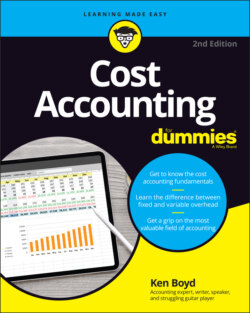Читать книгу Cost Accounting For Dummies - Kenneth W. Boyd - Страница 66
Contribution margin: Covering fixed costs
ОглавлениеVariable costs probably won’t keep you up at night. It’s the fixed costs that may cause insomnia, whether you’re talking about trade-show cost, the monthly rent, or salaries you need to pay your employees each month.
You focus on covering fixed costs using the contribution margin (that is, sales less variable costs):
Contribution margin = sales – variable costs
Contribution margin is the money derived from sales after you have covered variable costs, which is used to cover fixed costs and keep for your profit:
Profit = contribution margin – fixed costs
You also can use contribution margin to compute your breakeven point in terms of units. Remember that the breakeven point is the sales needed to cover all your costs and to create $0 profit. Consider this formula:
Breakeven point in units = Fixed costs ÷ contribution margin per unit
If you sell a software application for $40, and variable costs are $20 (which just happens to be the same as in the trade-show example), each unit has a contribution margin of $20. If you have $1,000 in fixed costs, the formula looks like this:
Breakeven point in units = $1,000 ÷ $20
Breakeven point in units = 50
If you sell 50 units, you’ve covered your fixed costs. Any sales over 50 units are all gravy and put you in Profit Land.
